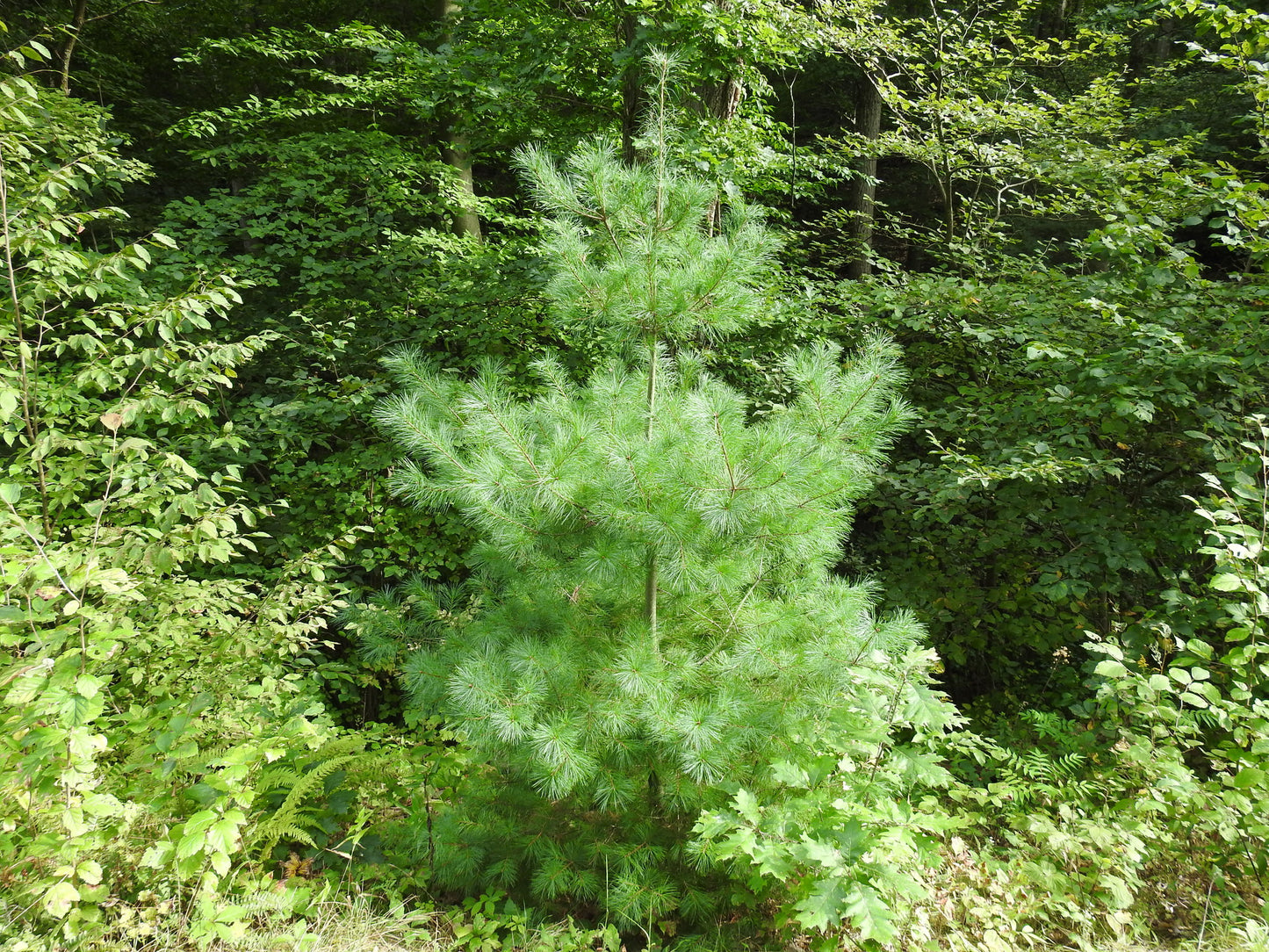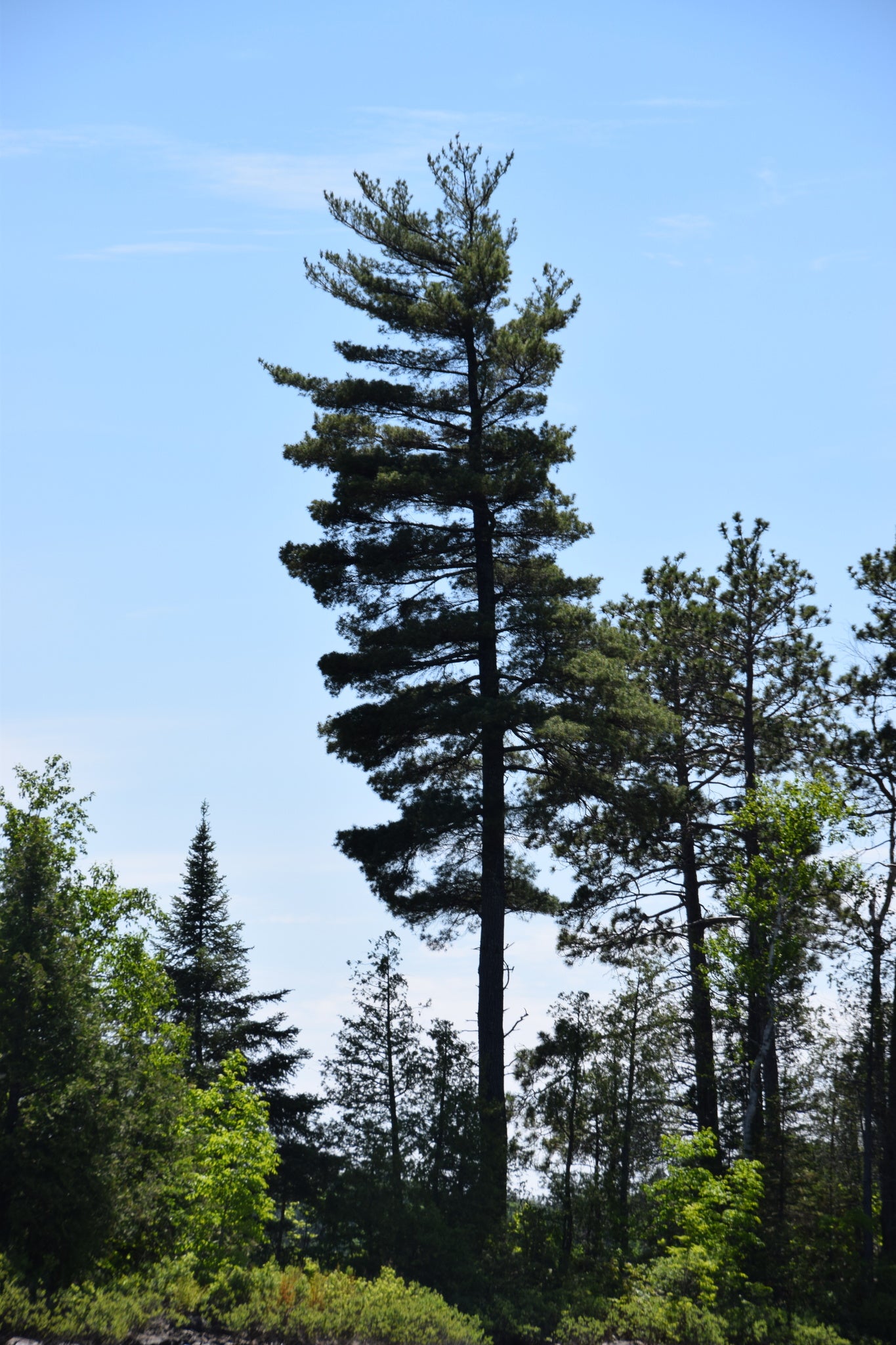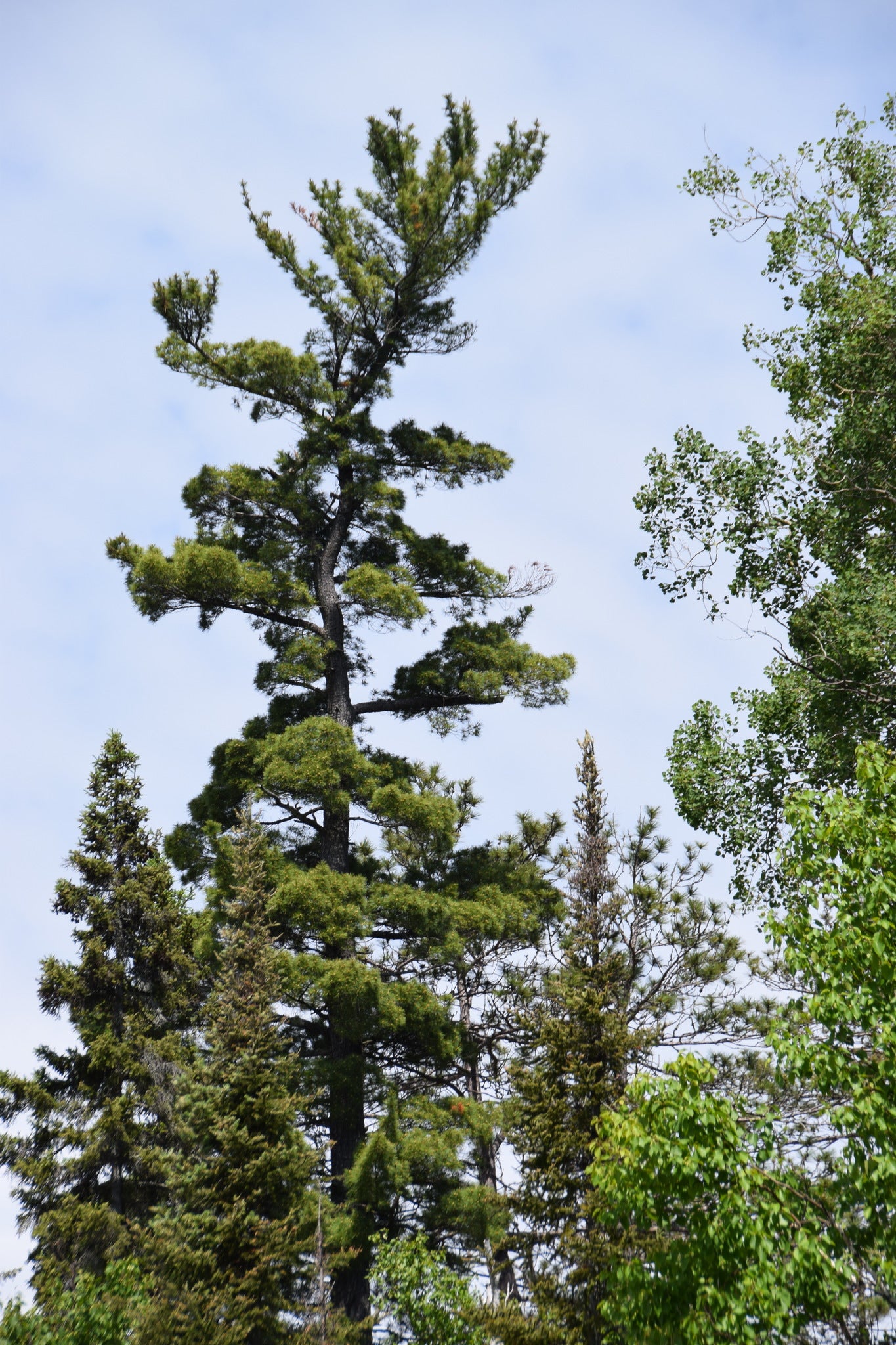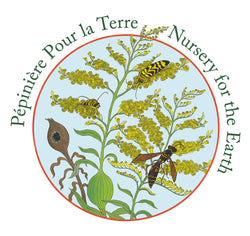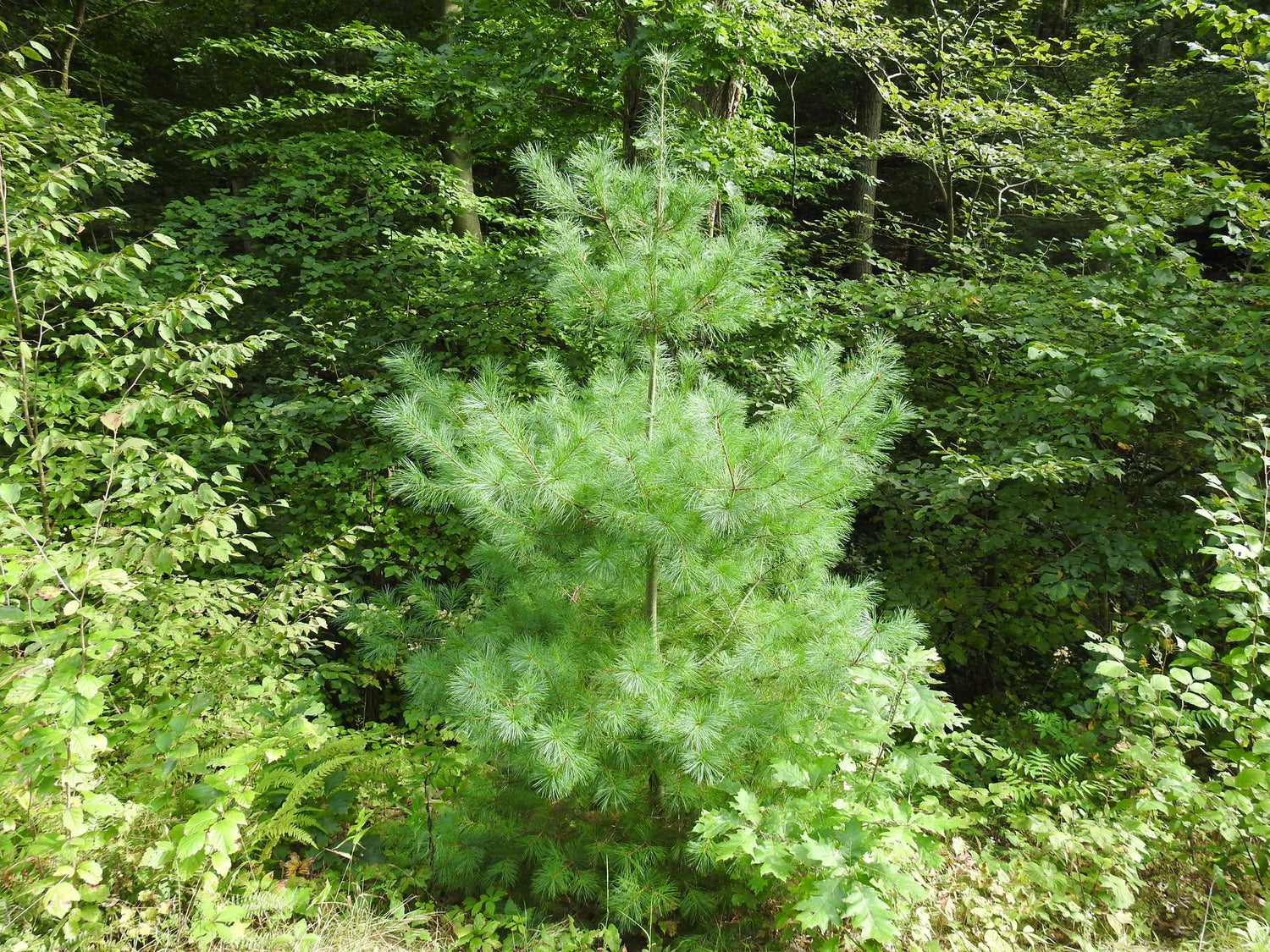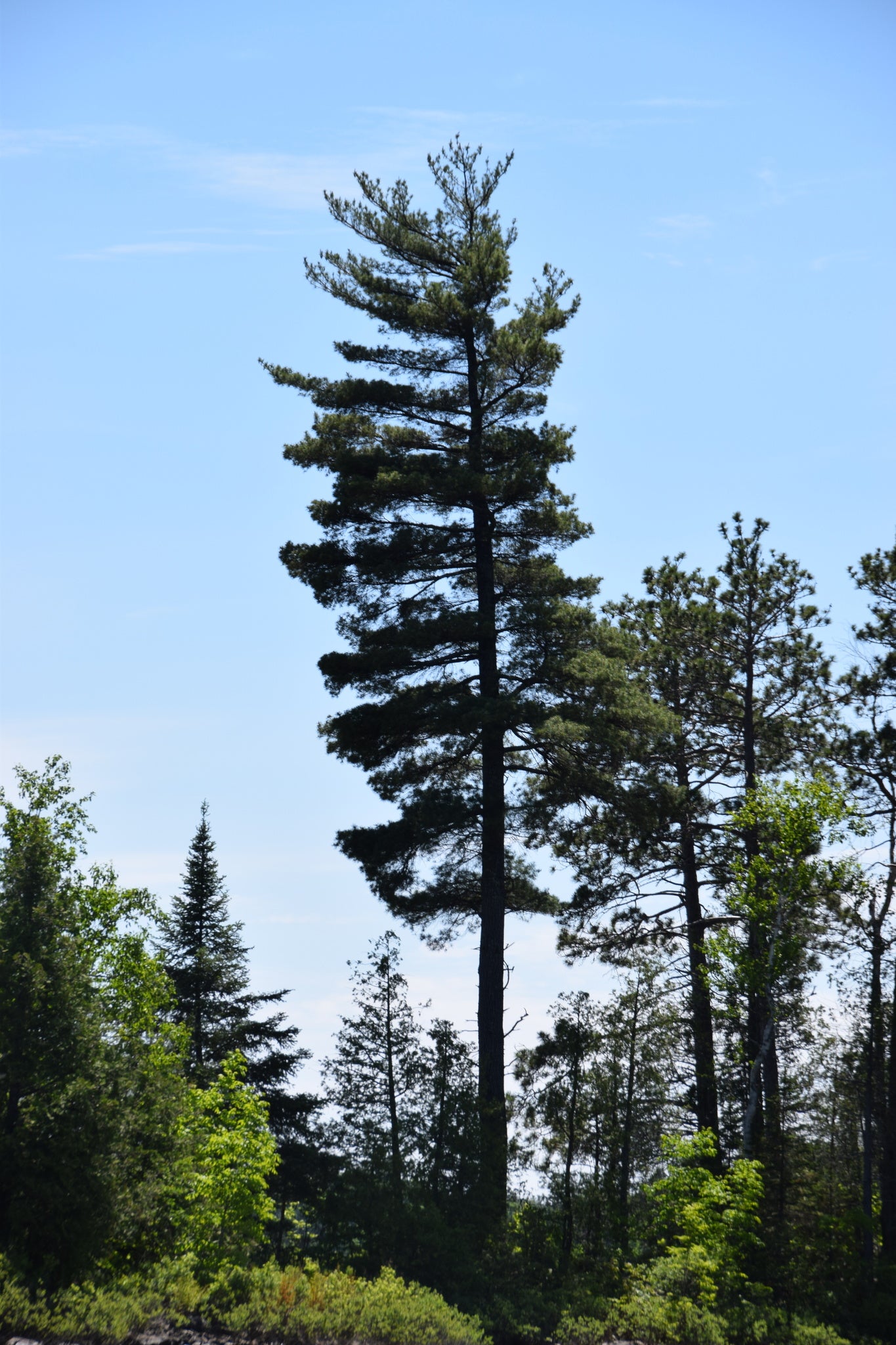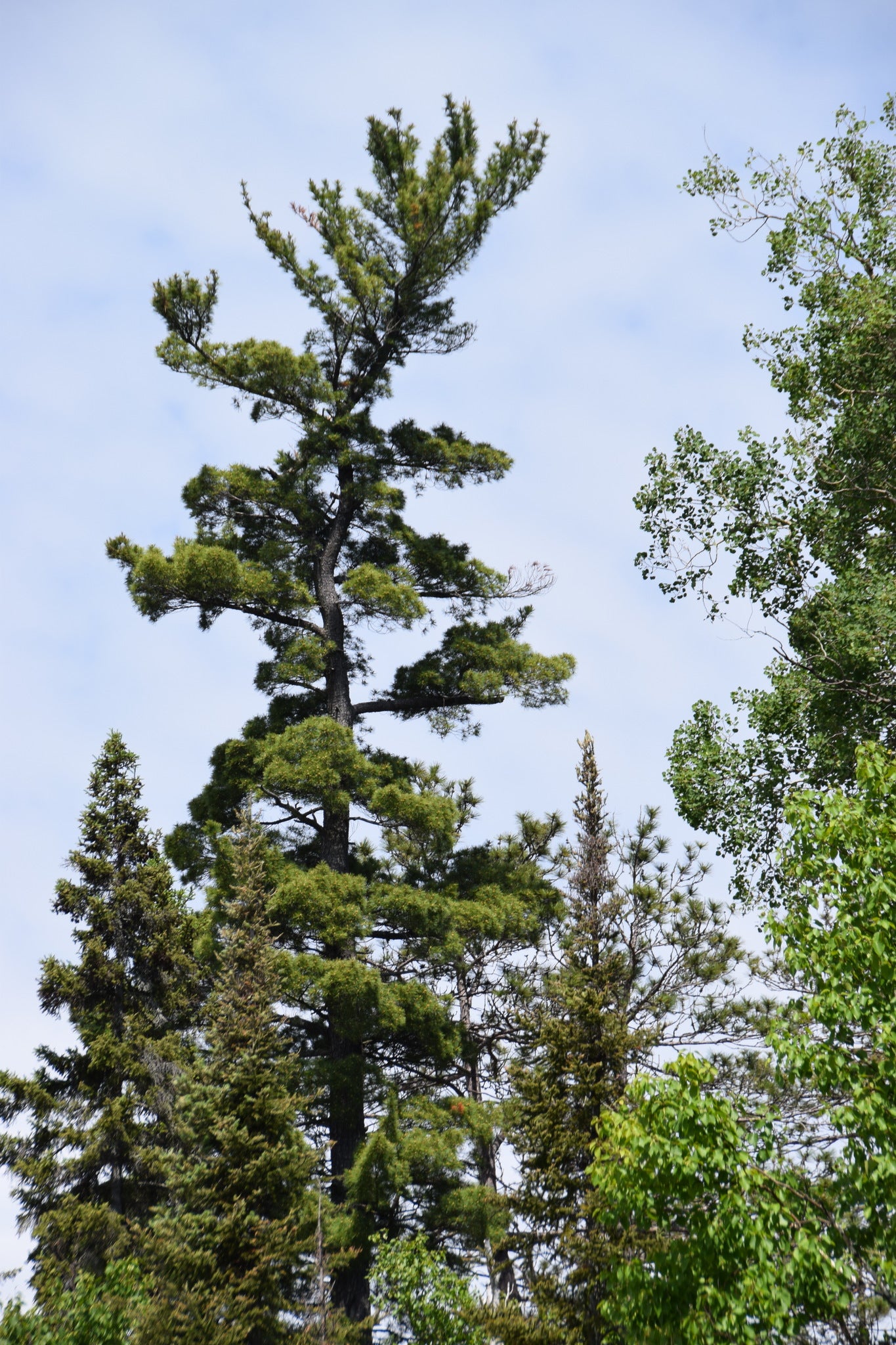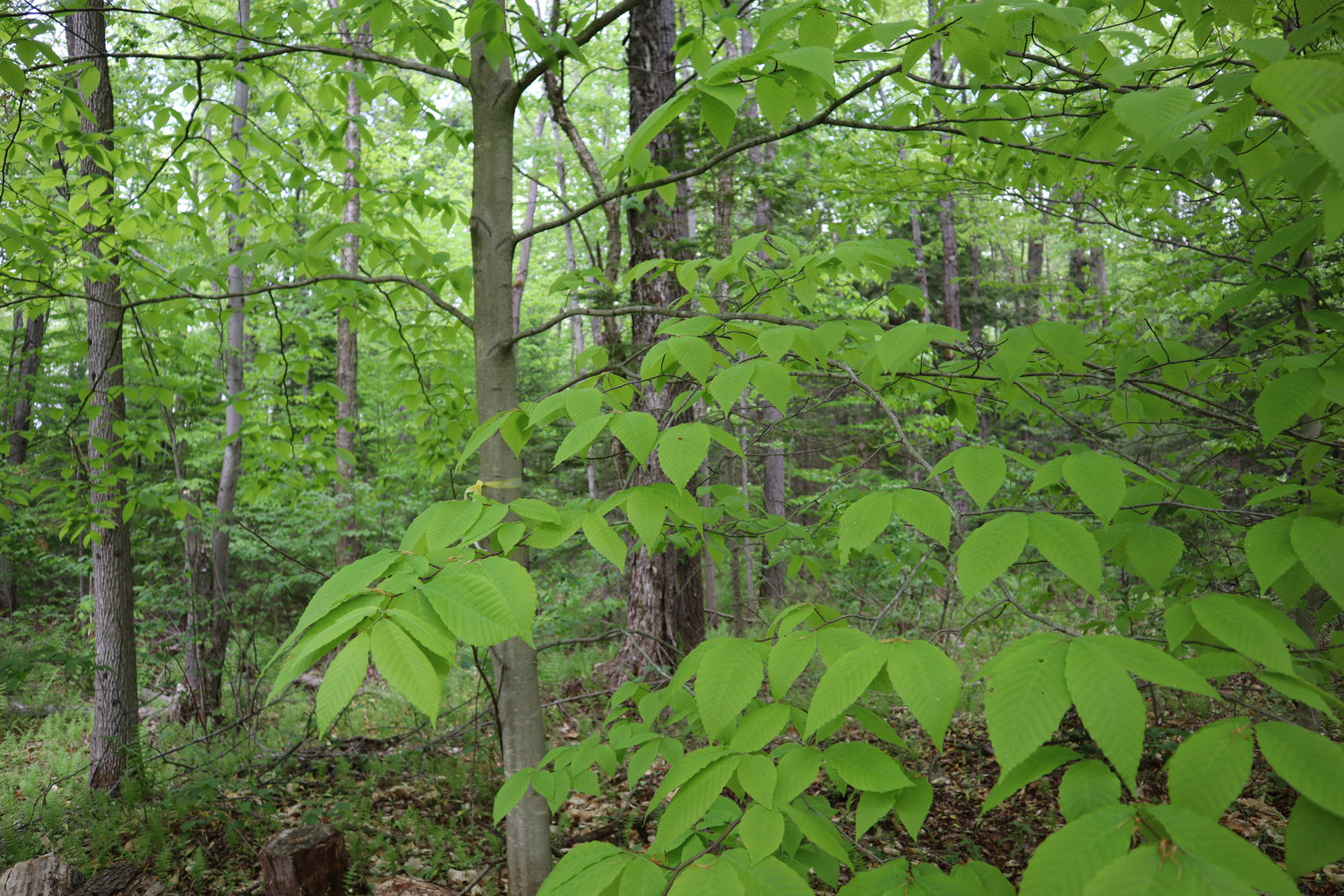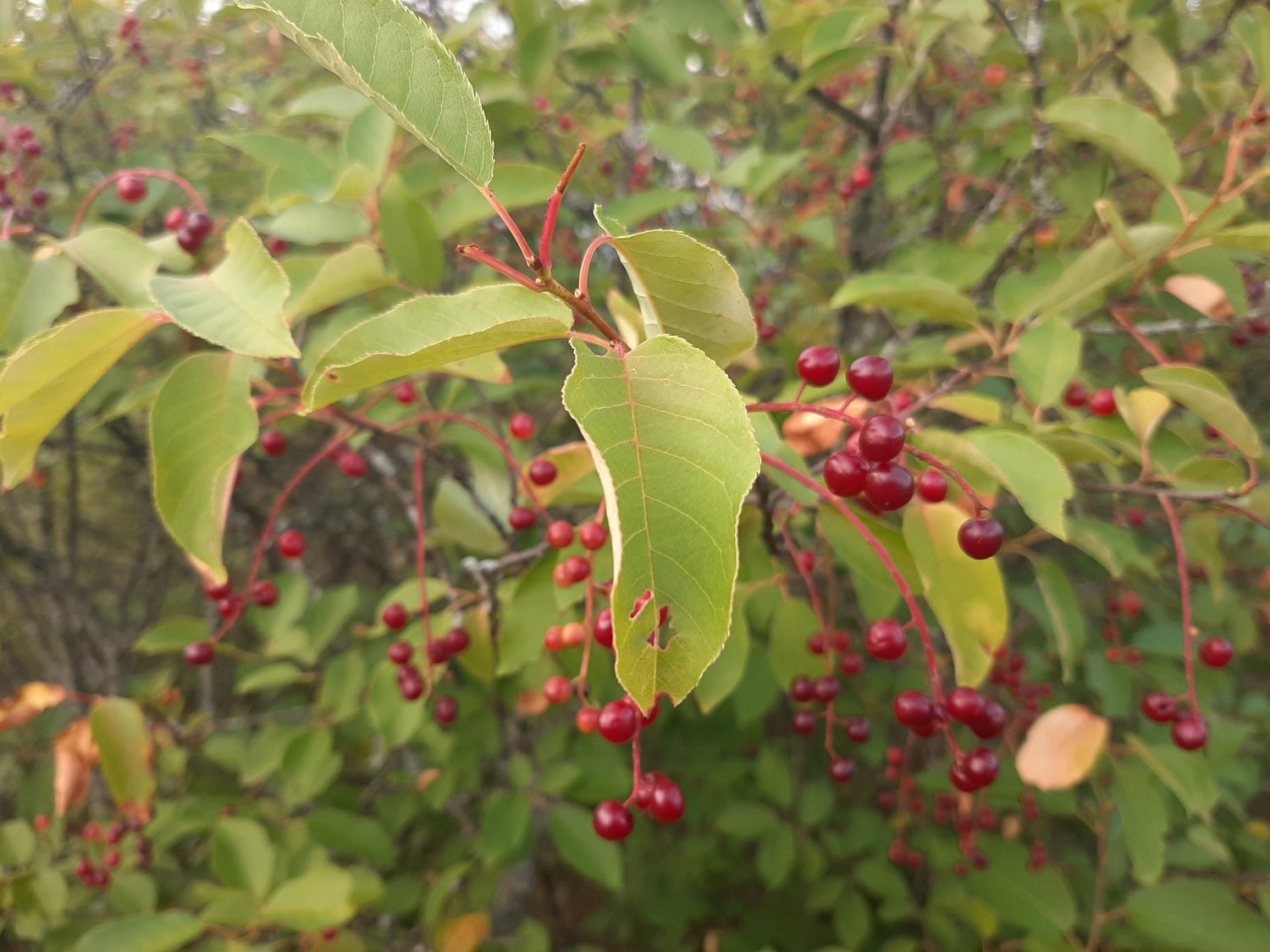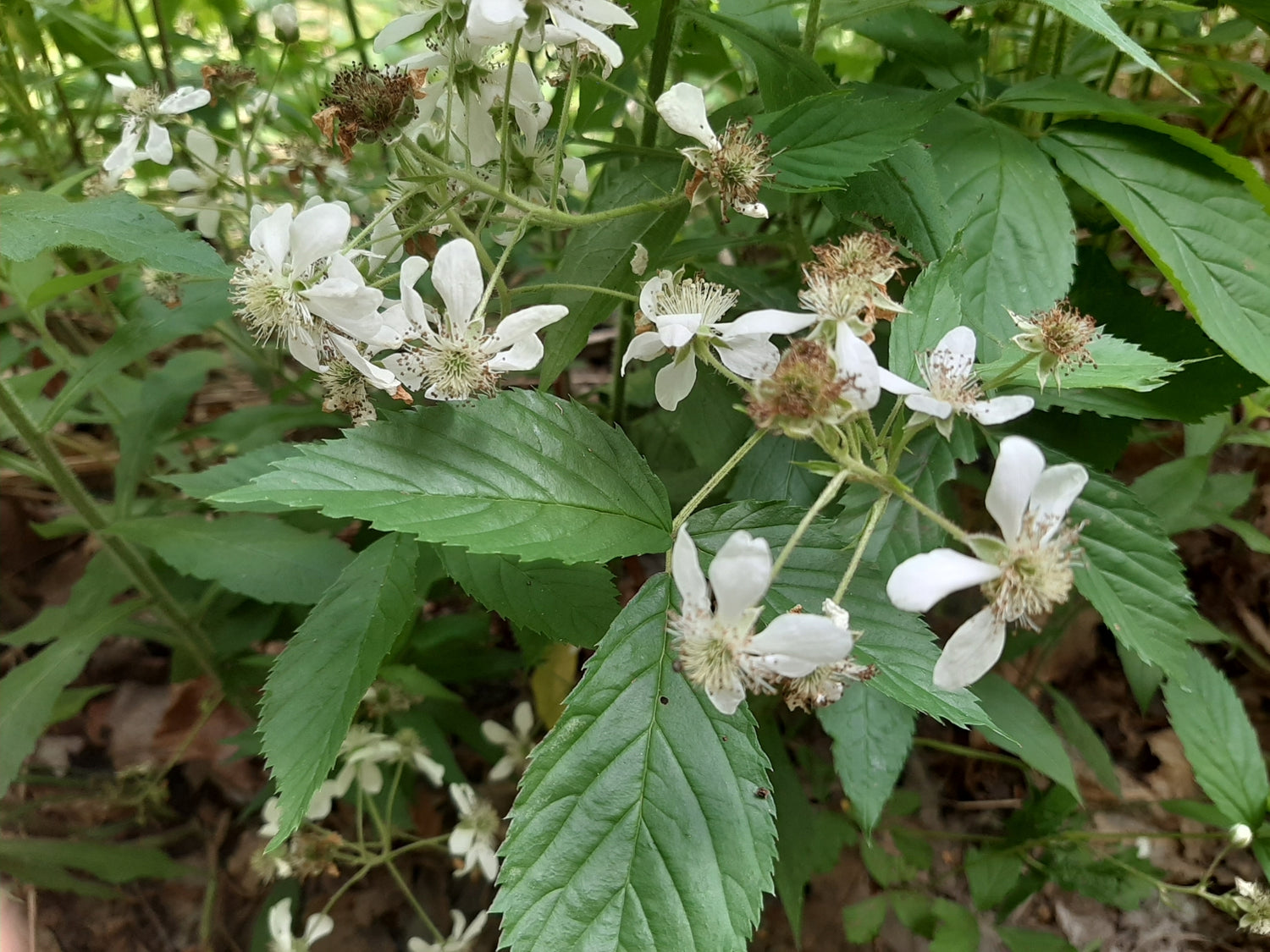Nursery for the Earth
Pinus strobus (Fr: pin blanc | En: Eastern White Pine)
Couldn't load pickup availability
Eastern White Pine
Pinus strobus
Alternative names: Northern White Pine, Weymouth Pine
French: Pin blanc de l’Est
Eastern White Pine is a truly majestic native conifer, recognizable by its tall, straight trunk and graceful horizontal branches that give it a tiered, pagoda-like silhouette. Before European colonization and the advent of the timber trade, these trees were the giants of the Ottawa Valley, with some individuals historically reaching over 40 metres in height.
This iconic tree holds deep cultural significance. It is Ontario’s provincial tree and is revered by the Haudenosaunee Confederacy as the Tree of Peace (Skaęhetsiˀkona), symbolizing the unity of the original Five Nations. The five needles in each fascicle represent this union.
Ecologically, Eastern White Pine is foundational. Its seeds, nestled within slender cones, provide vital nourishment to a wide range of wildlife, including songbirds, pine squirrels, and chipmunks. A great variety of insects—including beetles, butterflies, and moths—rely on the needles, bark, and cones. Some, such as the Eastern Pine Elfin (Callophrys niphon), are specialists that feed exclusively on this species.
White Pine thrives in well-drained soils, often establishing on sandy soils, granite outcrops, and in dry pine-oak savannahs. It is intolerant of heavy, poorly drained soils, but very tolerant of acidic or alkaline conditions. It is an excellent keystone species to include in native plantings, woodland restorations, or cultural landscapes.
Height: Up to 40 m historically
Bloom time: Spring (pollen cones); seed cones mature over 2 years
Light: Full sun to part sun
Moisture: Dry to moderate (intolerant of poorly drained soils)
Soil: Alkaline to acidic; often sandy or rocky
Habitat: Rock barrens, sandy sites, pine savannah, dry forests
Ecological benefits: Wildlife food source, specialist insect host, structural habitat for birds
Edible: Not typically consumed, but needles can be used for tea (rich in vitamin C), buds for delicious shortbread cookies
Share
